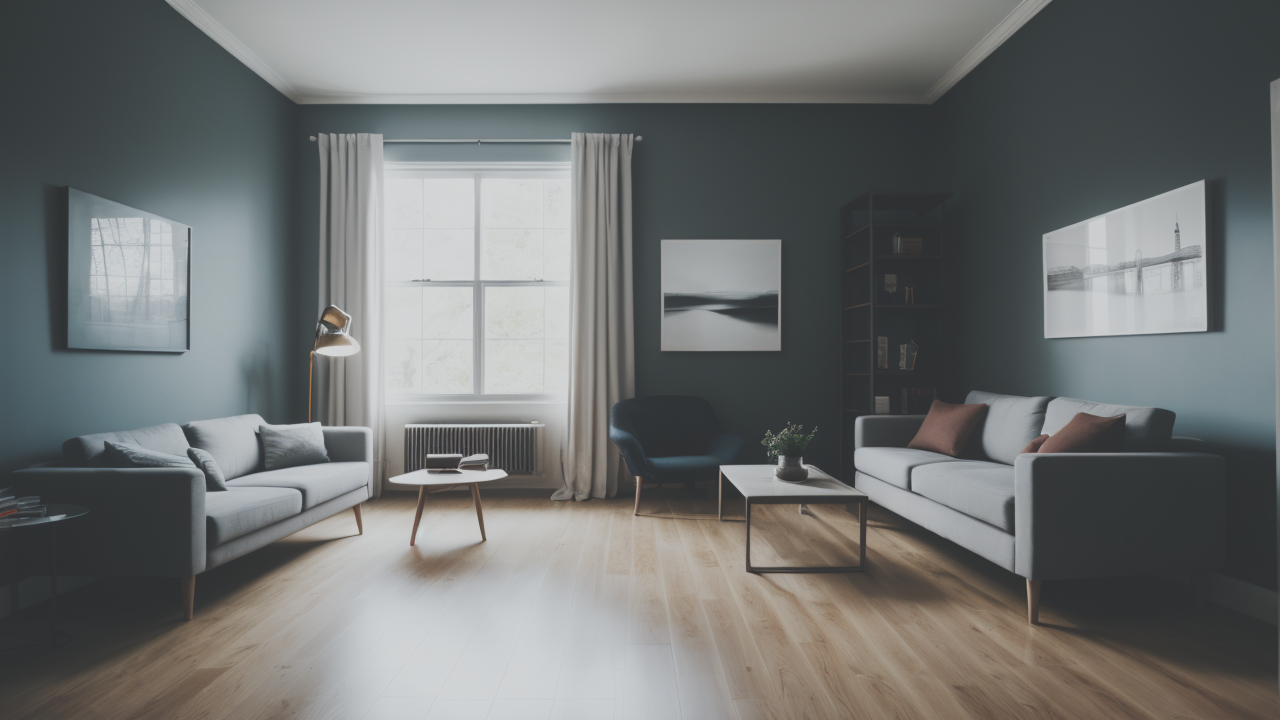
The Power of Simplicity: Embracing Contemporary Minimalist Art in American Homes
The Rise of Contemporary Minimalism in American Art Culture
The Historical Roots of Minimalism and Its Evolution
Minimalism in art began in the 1960s as a reaction to abstract expressionism. It focused on simplicity and objectivity. Early minimalist artists like Donald Judd and Frank Stella used basic shapes and colors. They aimed to create art that was free from emotional expression.

Over time, minimalism evolved beyond its strict origins. It began to incorporate more diverse materials and ideas. Contemporary minimalism still values simplicity, but it's more flexible. It often includes subtle textures and organic forms.
Today's minimalist art reflects our fast-paced, cluttered world. It offers a visual respite from information overload. This makes it appealing to many Americans seeking calm in their busy lives.
Contemporary Minimalism: A Reflection of American Lifestyle and Values
Contemporary minimalism mirrors modern American values. It emphasizes efficiency, clarity, and purpose. These qualities resonate with a society that values productivity and simplicity.
Many Americans are embracing minimalism in their lifestyles. They're decluttering their homes and simplifying their routines. This trend extends to their taste in art. Minimalist art provides a visual expression of this desire for simplicity.
The clean lines and uncluttered spaces in minimalist art appeal to those seeking order. It offers a sense of control in an often chaotic world. This aligns with the American ideal of creating one's own path and environment.
The Impact of Minimalism on Artistic Expression and Consumerism
Minimalism has significantly influenced how artists express themselves. It challenges them to convey meaning with less. This approach often leads to powerful, thought-provoking works.
In terms of consumerism, minimalism offers a counterpoint to excess. It encourages people to value quality over quantity. This shift affects how Americans view art purchases. They may buy fewer pieces, but invest in those that truly resonate.
Minimalist art also influences product design and marketing. Many brands now embrace clean, simple aesthetics. This trend reflects a broader cultural shift towards mindful consumption.
The Intersection of Minimalism and Home Decor
The Role of Minimalist Art in Modern Home Design
Minimalist art plays a crucial role in modern home design. It can transform a space, making it feel larger and more serene. A single minimalist piece can serve as a focal point in a room.

These artworks often feature neutral colors and simple shapes. This makes them versatile and easy to incorporate into various design styles. They can complement both traditional and contemporary interiors.
Minimalist art can also help create a sense of balance in a room. Its simplicity can offset more complex design elements. This makes it a valuable tool for interior designers and homeowners alike.
Balancing Aesthetics and Functionality in Minimalist Decor
Achieving a balance between aesthetics and functionality is key in minimalist decor. Minimalist art can contribute to this balance. It adds visual interest without cluttering the space.
When choosing minimalist art, consider how it fits with the room's purpose. A calming abstract piece might work well in a bedroom. A bold geometric print could energize a home office.
Remember that minimalism doesn't mean stark or cold. Textures and subtle color variations can add warmth. This helps create a space that's both beautiful and livable.
Case Studies: Successful Minimalist Home Transformations
- Case 1: A cluttered suburban home transformed with strategic minimalist art pieces.
- Case 2: A small urban apartment made to feel spacious with carefully chosen minimalist decor.
- Case 3: A traditional family home updated with a mix of minimalist and classic art.
These case studies show how minimalist art can dramatically change a space. They highlight the importance of thoughtful placement and selection. Each demonstrates how minimalism can enhance different types of homes.
Strategies for Collecting and Incorporating Minimalist Art in Homes
Curating Your Minimalist Art Collection
Start by defining your personal style within minimalism. Do you prefer geometric shapes or organic forms? Bold colors or muted tones? Understanding your preferences will guide your choices.

Research different minimalist artists and styles. Visit galleries, art fairs, and museums. This will help you develop an eye for quality and authenticity.
Consider starting with prints or photographs if you're on a budget. As your collection grows, you can invest in original pieces. Remember, quality is more important than quantity in minimalist art.
The Art of Display: Enhancing Minimalist Pieces
The way you display minimalist art is crucial. Give each piece enough space to breathe. This allows viewers to appreciate its simplicity and impact.
Consider the relationship between the art and its surroundings. A large, bold piece can stand alone on a wall. Smaller works might be grouped for greater impact.
Lighting is key in showcasing minimalist art. Use subtle, directed lighting to highlight textures and shapes. This can dramatically enhance the viewing experience.
Investing in Quality: Tips for Buying Minimalist Artwork
When buying minimalist art, focus on quality over quantity. Look for pieces that resonate with you personally. Don't just follow trends.
Research the artist and the piece's provenance. This is especially important for more expensive works. Authenticity and condition are crucial factors in value.
Consider the long-term potential of the piece. Will it stand the test of time, both in style and durability? Minimalist art can be a good investment if chosen wisely.
Don't rush your purchases. Take time to find pieces that truly speak to you. Building a meaningful collection is a gradual process. Enjoy the journey of discovery and curation.


